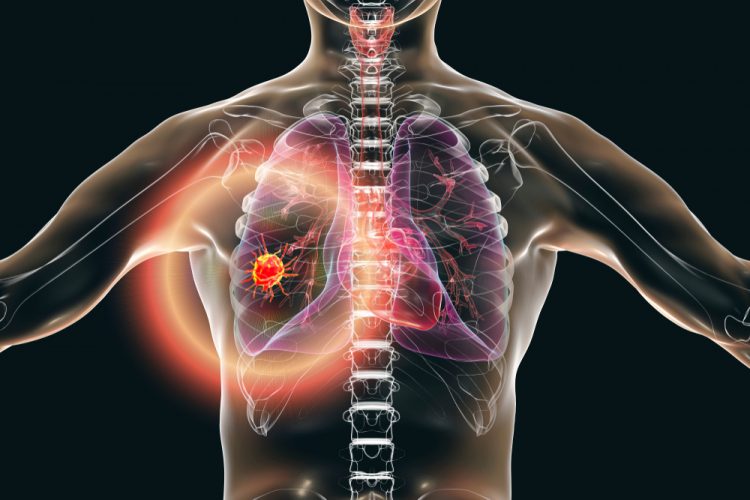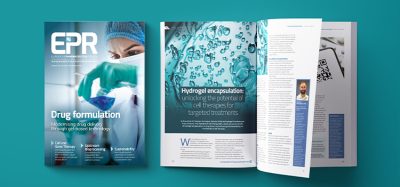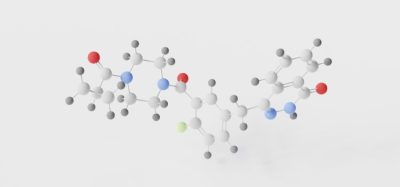49 percent ORR for Tagrisso plus savolitinib in lung cancer
Posted: 12 August 2022 | Hannah Balfour (European Pharmaceutical Review) | No comments yet
Almost half of patients with EGFR-mutated lung cancer with high MET overexpression who had progressed on Tagrisso alone responded to treatment with the addition of savolitinib.


Preliminary Phase II results show that Tagrisso (osimertinib) plus savolitinib had an objective response rate (ORR) of 49 percent in patients with epidermal growth factor receptor-mutated (EGFRm) non-small cell lung cancer (NSCLC) with high levels of MET overexpression and/or amplification, defined as IHC90+ and/or FISH10+, whose disease progressed on treatment with Tagrisso alone.
SAVANNAH (NCT03778229) is an ongoing global, randomised, single-arm Phase II trial studying the efficacy of savolitinib added to Tagrisso. To date, SAVANNAH has enrolled 294 patients worldwide. In the trial, patients will be treated with savolitinib 300mg or 600mg once-daily (QD) or 300mg twice-daily, in combination with oral osimertinib 80mg QD. The primary endpoint is ORR. Key secondary endpoints include progression-free survival (PFS), duration of response (DoR) and safety.
The highest ORR was observed in patients with high levels of MET who were not treated with prior chemotherapy (52 percent). In patients whose tumours did not show high levels of MET, the ORR was nine percent. The results were shared at the International Association for the Study of Lung Cancer 2022 World Conference on Lung Cancer in Vienna, Austria.
While EGFR-targeted therapy can provide a durable survival benefit to patients with EGFRm NSCLC, most will eventually develop resistance to their treatment, with MET being the most common resistance biomarker. Among patients screened for enrolment in SAVANNAH, all of whom experienced disease progression on Tagrisso, 62 percent had tumours with MET overexpression and/or amplification, and more than one-third (34 percent) met the defined high MET level cut-off.
Cristian Massacesi, Chief Medical Officer and Oncology Chief Development Officer, AstraZeneca, commented: “The current standard of care for patients with EGFR-mutated lung cancer who progress on targeted treatment is chemotherapy. The results from SAVANNAH suggest savolitinib added to Tagrisso at the time of disease progression could possibly provide these biomarker-selected patients with a potentially less toxic, more effective treatment option. We look forward to better understanding the potential of the Tagrisso plus savolitinib regimen in this trial and in the SAFFRON Phase III trial.”
Summary of efficacy resultsi
Endpoint | All patients (IHC50+ and/or FISH5+; n=193) | Patients with high levels of METii (IHC90+ and/or FISH10+)
| Patients with lower levels of METii (n=77) | |
ORR, percent (95% CI) | 32 (26, 39) | 49 (39, 59) | 52 (41, 63) | 9 (4, 18) |
Median DoRiii, months (95% CI) | 8.3 (6.9, 9.7) | 9.3 (7.6, 10.6) | 9.6 (7.6, 14.9) | 6.9 (4.1, 16.9) |
Median PFSiv, months (95% CI) | 5.3 (4.2, 5.8) | 7.1 (5.3, 8.0) | 7.2 (4.7, 9.2) | 2.8 (2.6, 4.3) |
DCRv, percent (95% CI) | 61 (53, 68) | 74 (65, 82) | 75 (64, 83) | 43 (32, 55) |
i. Analysis data cut-off: 27 August 2021
ii. Eight patients excluded from subgroup analyses due to invalid or missing test results
iii. DoR, duration of response
iv. PFS, progression-free survival
v. DCR, disease control rate
The safety profile of Tagrisso plus savolitinib was consistent with the known profiles of the combination and each treatment alone. No new safety signals were identified.
Savolitinib, marketed in China under the brand name Orpathys, is an oral, potent and highly selective MET tyrosine kinase inhibitor (TKI) being jointly developed and commercialised by AstraZeneca and HUTCHMED.
The global SAFFRON Phase III trial will further assess the Tagrisso plus savolitinib combination versus platinum-based doublet chemotherapy in patients with EGFRm, MET-overexpressed and/or amplified, locally advanced or metastatic NSCLC following Tagrisso. Patients are being prospectively selected using the high MET level cut-off identified in SAVANNAH.
Related topics
Anti-Cancer Therapeutics, Clinical Trials, Drug Development, Drug Safety, Research & Development (R&D)









